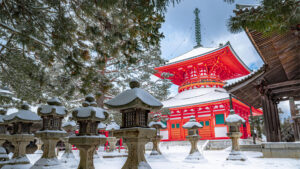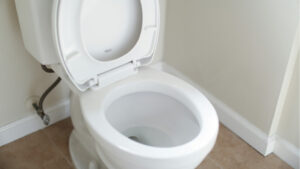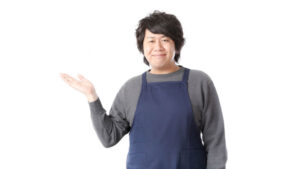Japan is a country deeply rooted in its unique culture and etiquette. For overseas visitors, understanding basic manners and etiquette leads to more comfortable and smooth communication and stay.
This article clearly explains Japanese manners and etiquette that you should know in various situations such as daily life, business, public places, and tourist spots. Please take a look at these key points to respect Japanese culture and enjoy a wonderful experience.
Contents
Basic Manners in Japan
Greeting Manners
Types of Bowing and Their Uses
In Japan, it is common to bow when greeting others. There are several types of bows, used depending on the person and situation.
- Es-shaku (会釈): A light bow of about 15 degrees. Used for casual greetings or passing by someone.
- Futsūrei (普通礼): A polite bow of about 30 degrees. Used in business settings or when greeting someone of higher status.
- Saikeirei (最敬礼): A deep bow of about 45 degrees. Used especially to express gratitude or apologies.
The correct posture involves bending from the waist with a straight back, not just nodding the head. Giving an appropriate bow shows respect to the other person.
Key Points About Language Use
Words used in greetings are also an important part of Japanese manners. Basic greetings include “Konnichiwa” (Hello) and “Ohayō gozaimasu” (Good morning), but polite speech (keigo) is used when speaking formally.
For example, in business, expressions like “Yoroshiku onegaishimasu” (Nice to meet you / Please take care of me) and “Osewa ni narimasu” (Thank you for your support) are commonly used.
It is important to use appropriate language depending on the other person’s position and age.
Things to Keep in Mind When Meeting Someone for the First Time
In Japan, it is expected to greet someone you meet for the first time politely and respectfully. Begin with a slight bow, make eye contact, and say “Hajimemashite” (Nice to meet you).
When exchanging business cards, it is polite to offer your card with both hands and receive the other person’s card carefully with both hands.
Handshakes and hugs are not common in Japan, so it is safer to avoid them during first meetings.
Manners in Public Places
How to Behave on Trains and Buses
In Japan, trains and buses are considered public spaces where quiet and orderly behavior is expected. Talking on the phone is generally discouraged, and in many cases, phone calls are prohibited while riding. Sending emails or messages should be done in silent or vibration mode.
Priority seats are reserved for elderly people, pregnant women, and those with disabilities. It is polite to offer your seat if someone who needs it is nearby. Eating, drinking, and leaving trash inside vehicles are also prohibited.
The Importance of Being Quiet
Quietness is highly valued in Japanese public places. Loud conversations and laughter at train stations, bus stops, and in the streets are considered disturbing to others. Maintaining silence shows consideration for other users.
This etiquette is especially strict during nighttime on public transportation and in residential areas to avoid noise disturbances. Visitors from overseas should understand and adapt to this quiet atmosphere.
Garbage Separation and Carrying Your Trash Home
There are few public trash cans in Japan, so it is customary to take your garbage home with you. Public trash bins, when available in cities or stations, require detailed separation into categories such as “burnable waste,” “non-burnable waste,” and “PET bottles.”
Littering is illegal, and carrying your trash helps keep the streets clean. Visitors who cooperate with these rules contribute to maintaining Japan’s beautiful public environment.
Dining Manners
How to Use Chopsticks and Common Etiquette Mistakes
Using chopsticks (hashi) is common in Japanese meals. Proper use of chopsticks is an important way to show respect to others. For example, sticking chopsticks vertically into food (“hashitate”) should be avoided because it resembles a ritual at funerals.
Also, rubbing chopsticks together is discouraged as it may imply that the chopsticks are cheap. Passing food directly from chopsticks to chopsticks is also avoided since it resembles a funeral custom. When not in use, chopsticks should be placed on a chopstick rest.
Talking and Making Sounds While Eating
In Japan, it is preferred to eat quietly, but slurping noodles like soba or ramen is not considered rude. In fact, it is accepted as a way to enjoy the flavor of the noodles.
However, speaking loudly or talking with food in your mouth is discouraged. It is common to lift bowls when eating, especially rice bowls, which are often held in the hand.
Seating Order and Toasting Rules at Drinking Parties
At Japanese drinking parties, especially in business settings, seating order is important. Seniors or those of higher status usually sit further from the entrance or by the wall, while juniors or newcomers sit closer to the entrance. It is polite to wait to be seated.
Toasting (kanpai) is done once everyone is gathered. When raising your glass, hold it lightly and offer it slightly lower than the senior person’s glass. Avoid raising your glass higher than theirs.
During the party, it is also common to pour drinks for others first (“oshaku”), which is a sign of good manners.
Basic Etiquette in Japan
Grooming Etiquette
Etiquette Regarding Perfume and Body Odor
In Japan, it is generally considered polite to use fragrances, especially perfume, sparingly. In public places and workplaces, strong scents can make others uncomfortable and may even cause allergies or health issues.
Care for body odor is also highly valued. Especially during summer, it is recommended to shower frequently and use deodorants to control sweat odor. Maintaining cleanliness shows consideration for others and forms the foundation of good relationships.
How to Remove Shoes and Use Slippers
Japan has a culture of removing shoes in many homes, traditional places, and sometimes certain restaurants or facilities. Before entering a building, it is polite to take off your shoes and neatly arrange them in the designated area. It is preferable to sit down quietly and remove shoes slowly, avoiding rough handling.
After removing shoes, it is common to put on slippers. Slippers are simple indoor footwear that help reduce noise and keep floors clean. However, in places like toilets or some specific areas, you may need to change into special slippers, so it is important to follow instructions for each location.
When wearing slippers, avoid walking with your heels pushed down, as this is considered rude. Properly putting your feet into the slippers is polite. The distinction between shoes and slippers symbolizes Japan’s culture of cleanliness and respect.
Etiquette When Visiting Others
Contacting Before a Visit and Being Punctual
In Japan, it is considered proper manners to always contact someone in advance and confirm the date and time before visiting their home or workplace. Unexpected visits can cause inconvenience to the other person, so they should be avoided. It is important to be punctual and, if you are going to be late, to inform the person as early as possible. Being on time is the first step to building trust.
Choosing and Presenting a Gift (Temiyage)
It is common to bring a small gift called “temiyage” when visiting someone. This gift shows appreciation and respect, and often includes local specialties, sweets, or drinks. The gift should not be too expensive and should be something the recipient can easily accept.
When presenting the gift, it is preferable that it is nicely wrapped, and it should be offered politely with both hands. Adding a phrase like “Honno kimochi desu” (“This is just a small token”) creates a good impression.
Handling Shoes Before Entering the House
In Japanese homes, it is customary to remove shoes at the entrance. When you arrive, lightly clean the dirt off your shoes on the “tataki” (area for removing shoes) and quietly take off your shoes. It is polite to arrange your shoes neatly after removing them.
In many cases, you will change into slippers inside the house. If slippers are not provided, it is acceptable to stay barefoot or wear socks. Observe carefully how shoes are removed and slippers are used, and follow the host’s instructions.
Communication Etiquette
How to Use Keigo (Honorific Language) and Important Points
Japanese has a special form of speech called “keigo,” which is used differently depending on the other person’s age, status, and relationship. Keigo is broadly divided into three types: sonkeigo (respectful language), kenjōgo (humble language), and teineigo (polite language). Proper use of keigo shows respect to the other person, but incorrect usage can be perceived as rude, so caution is necessary.
In business and formal situations, polite speech is expected; however, using overly complex keigo can sound unnatural. The basic principle is to respect the other person and speak clearly and politely.
Things to Keep in Mind When Speaking with Superiors
In Japan, a polite and respectful attitude is required when speaking with superiors such as elders or bosses. It is important to use keigo and show that you are actively listening to them.
Direct denial or strong disagreement is often avoided; instead, indirect expressions or ambiguous responses are used. Respecting the other person’s position and maintaining a humble attitude helps build good relationships.
The Cultural Meaning of Silence and Pauses
In Japanese conversations, “silence” and “ma” (the pause or interval) play an important role. Even when there is silence between exchanges, it does not necessarily mean the conversation has ended; rather, it is a valuable time to respect the other’s thoughts or to organize one’s feelings.
It is considered polite to wait until the other person is ready to speak instead of rushing to fill the silence. Skillful use of these pauses can lead to deeper understanding and trust. Foreigners are encouraged not to fear silence but to enjoy the relaxed flow of conversation.
Business Manners and Etiquette
Business Card Exchange Etiquette
How to Give and Receive Business Cards
In Japanese business culture, exchanging business cards (meishi koukan) is a very important ritual that creates a first impression. When giving your business card, present it politely with both hands, make eye contact, and offer a brief greeting. When receiving a card, also use both hands and take time to carefully look at the other person’s card before putting it away.
It is considered rude to give or receive a business card with one hand. Always handle the exchange with respectful and deliberate movements to show consideration for the other person’s status.
Proper Handling of Business Cards
After receiving a business card, do not immediately put it into your pocket or bag. Instead, place it carefully on the table or in a business card holder. During meetings, it is common to refer to the card to confirm the person’s name and position, so keeping it accessible is polite.
Treat the business card with respect—avoid folding, bending, or dirtying it. Ignoring the card or leaving it unattended after the exchange is also considered disrespectful.
Meeting and Conference Etiquette
The Importance of Being On Time
In Japanese business culture, punctuality for meetings and conferences is extremely important. Being late is seen as wasting others’ time and can damage trust. It is expected that you arrive before the scheduled start time and prepare yourself. If you anticipate being late, inform the relevant parties as early as possible.
Courtesy and Order When Speaking
During meetings, it is important to observe the order of speaking and maintain politeness. Even if you have something to say, avoid interrupting others and wait for your turn. When speaking, show respect to others and use polite language. When expressing opposing opinions or criticisms, it is desirable to use gentle and considerate expressions while respecting the other person’s position.
Manners Travelers Should Know in Japan
Manners at Tourist Sites
Points to Note When Taking Photos
In many Japanese tourist spots, photography is allowed, but some facilities and buildings—especially museums and temples—prohibit it. Always check signs and notices carefully, and refrain from taking photos in prohibited areas.
Be considerate not to include other tourists or locals in your photos without permission, respecting their privacy. Flash photography is also often banned, so please pay attention to such rules.
Manners for Visiting Shrines and Temples
Shrines and temples are important sites of traditional Japanese culture. Before passing through the entrance torii gate, it is customary to bow once. The center of the pathway (sando) is considered the path of the gods, so it is polite to walk along the sides.
Perform the cleansing ritual at the chozuya by washing your hands and rinsing your mouth, then quietly proceed to worship. Offer a coin into the offering box, ring the bell, and follow the sequence of two bows, two claps, and one bow. Follow the rules for photography within the grounds and behave respectfully, especially during festivals.
Rules for Behavior in Crowded Areas
Tourist spots can be very crowded during busy seasons and weekends. When lining up, do not cut in line and always wait your turn. Avoid loud noises, running, or any disruptive behavior and be mindful of those around you.
When walking through tourist areas, avoid blocking pathways, and choose spots that do not disturb others when taking photos. By following these manners, everyone can enjoy sightseeing comfortably.
Etiquette on Public Transportation
Rules for Lining Up
In Japan, it is standard practice to line up properly when boarding trains and buses. Stations and bus stops clearly mark where to queue and where to board. Cutting in line is considered very rude and causes inconvenience to others, so it should be strictly avoided. Lining up helps ensure smooth and safe boarding and disembarking.
Use of Priority Seats and Offering Them to Others
Inside vehicles, there are seats called “priority seats” reserved for elderly people, pregnant women, those with disabilities, and injured passengers. While healthy passengers may sit in these seats, it is polite to promptly give up your seat if someone in need approaches. A spirit of consideration and sharing helps everyone use public transportation comfortably.
Prohibited Actions Inside Stations and Vehicles
Noise and disruptive behavior are strictly regulated in Japanese stations and vehicles. Phone calls are often prohibited, so devices should be set to silent mode and used quietly. Eating, drinking, and littering are forbidden, and passengers are expected to carry their trash with them.
Running or occupying multiple seats is also discouraged. Following these rules helps maintain a clean and safe environment on public transportation.
Etiquette at Accommodation Facilities
Greetings and Interaction at Ryokan and Hotels
At Japanese ryokan and hotels, staff greet guests politely and provide attentive service. It is customary to respond with a smile and say phrases like “Irasshaimase” (Welcome) and “Arigatou gozaimashita” (Thank you) during check-in and check-out. If you have questions or requests, politely and modestly express them to ensure smooth communication. Following the facility’s rules and showing gratitude helps create a pleasant stay.
Proper Use of Yukata and Slippers
The yukata provided at ryokan is casual clothing meant for relaxing indoors. Adjust the yukata belt so it is not too tight and allows easy movement. Note that the way to wear the yukata and tie the belt differs between men and women, so it is helpful to check beforehand.
Slippers are used for moving around inside the facility, but in some areas such as toilets and hot spring baths, special slippers must be worn. It is polite to wear slippers properly without stepping on the heel, and to walk quietly without running.
Garbage Separation and Cleaning Rules
Japanese accommodations strictly enforce garbage separation. You are expected to separate burnable waste, non-burnable waste, and recyclables when disposing of trash. While cleaning staff will tidy your room at checkout, organizing your trash in designated places or bags helps the process go smoothly.
Maintaining cleanliness in your room and common areas and handling facilities with care are also part of good manners. These practices contribute to a comfortable and pleasant stay for everyone.
Understanding Japanese Manners and Etiquette for a Comfortable Stay in Japan
Japanese manners and etiquette are important cultural practices that express consideration and respect for others. By following greetings, behavior in public places, dining manners, business etiquette, and basic rules that travelers should know, you can avoid trouble and build trust more easily.
Using the points from this article as a guide, acting with respect for Japanese culture will help you enjoy a richer and more pleasant stay in Japan.












